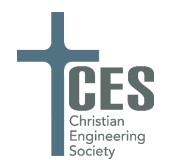Document Type
Paper
Abstract
In 1986, the book Responsible Technology [1] was published as an important compilation from a number of thoughtful Christians engaged in technology and engineering in that era. In many ways, this book and those involved with it laid the foundation for what has become the Christian Engineering Society. A particularly valuable aspect of this work was that it laid out a biblically normative framework for doing engineering based on Herman Dooyeweerd’s modal aspects [2], fleshing out how the higher aspects such as faith, ethics, and justice should play an integral role in engineering development, even though we often have a tendency to think of engineering as “neutral” when it comes to these areas. Over the years, this normative design approach has been used heavily in certain Christian engineering programs, has been referenced in many conference presentations, has been wonderfully unpacked and applied specifically to digital technology [3], and has been recently updated and refreshed [4].
One challenge of applying this framework broadly to all engineering design is that it seems to have been developed with a primary focus on mechanical and electrical design; thus its initial application and much of the subsequent unpacking has been geared toward prototype-style design, i.e. “gadget development,” if you will. As civil engineering programs have been developed and are flourishing at a number of Christian universities, attempts to apply this normative approach to civil projects such as infrastructure development that are more code-based and specification-driven have often felt lacking. However, as a long-time civil engineering educator and licensed professional engineer in civil engineering, I believe these frustrations are not reflective of a lacking framework. Rather, I think there simply has not been much attention given to applying the normative approach to these types of projects. In this paper, I plan to increase the body of work in this area by exploring the design norms through the particular lens of civil engineering with an eye toward code-based infrastructure development. This work will re-examine each of the norms through a civil engineering lens and will likely flesh out particular applications and case studies that should be valuable both for civil engineering students and educators as well as practicing professionals in civil engineering.
Creative Commons License

This work is licensed under a Creative Commons Attribution-Noncommercial-No Derivative Works 4.0 License.
Copyright
© 2024 Justin R. Vander Werff. All rights reserved.
Applying the Normative Design Approach to Civil Engineering
In 1986, the book Responsible Technology [1] was published as an important compilation from a number of thoughtful Christians engaged in technology and engineering in that era. In many ways, this book and those involved with it laid the foundation for what has become the Christian Engineering Society. A particularly valuable aspect of this work was that it laid out a biblically normative framework for doing engineering based on Herman Dooyeweerd’s modal aspects [2], fleshing out how the higher aspects such as faith, ethics, and justice should play an integral role in engineering development, even though we often have a tendency to think of engineering as “neutral” when it comes to these areas. Over the years, this normative design approach has been used heavily in certain Christian engineering programs, has been referenced in many conference presentations, has been wonderfully unpacked and applied specifically to digital technology [3], and has been recently updated and refreshed [4].
One challenge of applying this framework broadly to all engineering design is that it seems to have been developed with a primary focus on mechanical and electrical design; thus its initial application and much of the subsequent unpacking has been geared toward prototype-style design, i.e. “gadget development,” if you will. As civil engineering programs have been developed and are flourishing at a number of Christian universities, attempts to apply this normative approach to civil projects such as infrastructure development that are more code-based and specification-driven have often felt lacking. However, as a long-time civil engineering educator and licensed professional engineer in civil engineering, I believe these frustrations are not reflective of a lacking framework. Rather, I think there simply has not been much attention given to applying the normative approach to these types of projects. In this paper, I plan to increase the body of work in this area by exploring the design norms through the particular lens of civil engineering with an eye toward code-based infrastructure development. This work will re-examine each of the norms through a civil engineering lens and will likely flesh out particular applications and case studies that should be valuable both for civil engineering students and educators as well as practicing professionals in civil engineering.

